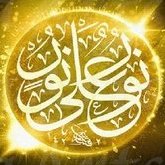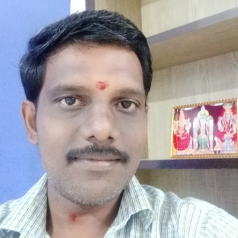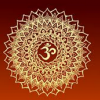Search the Community
Showing results for tags 'Sufism'.
Found 5 results
-
In Hinduism, there are 4 goals of life (Purushartha): 1) Artha (material wealth and security), 2) Kama (pleasure and enjoyment of life), 3) Dharma (following duty and religion, right conduct), 4) Moksha (spiritual liberation and salvation). I've always mostly been interested in dharma and moksha, so my spiritual search in sufism, hinduism, buddhism, daoism etc, in the areas of qigong, meditation, rituals etc, have always been in these two areas. Lately I'm feeling quite contented with my spiritual life. This has brought me a curiousity about how these traditions can also be used for upgrading the artha and kama side of life. What are your experiences and greatest hits with using spiritual traditions for upgrading kama and artha? Personally these are some of the things I've tried, which I felt worked: Kama: 1) Dan Rose "Sex God Method" or the "DEVI method" - this book blew my mind, upset me, broke my innocent view of women and sex, yet changed my sex life forever (for the better). 2) Daoist Sexual Qigong (a combination of postures, massage, breathholding and meditation, including genital weight lifting and swinging weights). 3) Daoist Lovemaking (using all of your body along with the art of feeling, knowledge of meridians and qi, as well as stages of arousal and different types of orgasms, to upgrade your lovemaking experience). Artha: 1) I've done a 41 day sufi ritual consisting of daily tasbih (reciting names of God) as well as salawaat (prayers for the prophet). On the 39th day, I got a call out of nowhere, inviting me to a one month job, which gave me 5 months of salary. At that point, I had been un-employed for 1.5 years, my savings were nearing 0, that's why I got so desperate that I decided to try a money ritual. 2) For several years, at every full moon I've done a money mantra from Vethathiri Maharishi. It was given to him by a yogi in astral form, when he had lost his business and had suddenly become very poor. He was great in meditation and spirituality, and had used his business to serve his community. They survived of his wife selling food she made in the streets. After he started this mantra, they built up the "World Community Service Center" and he became a famous Guru, respected by scientists, researchers, poets, celebrities and politicians. He's even on stamps, and his programs are in schools and universities. For me personally, I feel an energy building in my system when I do the mantra. I can't say for sure which results it has given me, but I do feel energy from it. 3) When I did a 41 Ganapati Tarpana (water ritual to the hindu elephant God), on the 39th day, I was called by my aunt, asking if I could tutor her girl friend's daughter in French. It was a few hundred bucks, very easy, 5-6 weeks in a row. On the 44th day of the ritual (I continued it for 3 more days), I got a call from the last place I worked, asking if I could come back for another 6 month project. 4) When I did 41 day Ganapati Yantra Puja, from the 38th day I started receiving inspiration on how to write a book and sell it using social media. Something I never thought of before! I'm still working on this project I can see that selling products online to the English speaking global market has unsurpassed potential for moneymaking, compared to simply working at a 9 to 5 job. Questions for you: What are your experiences and/or greatest hits with using spiritual traditions for upgrading kama and artha? God bless you!
-
Assalaamu aleikum wa rahmatullahi wa barakatu (May the Peace, Blessings and Mercy of Almighty God be upon you) In this post I will go over and compare the muslim ritual prayer with yoga, qigong and meditation. I will explain some of the "hidden gems" I myself have discovered with this practice. The prayer has two parts: 1) Ritual Purification (wudhu) 2) The actual prayer itself. 1) Ritual Purification (wudhu) You wash your hands, mouth, nose, face, arms, head, ears and feet. You say mantras when starting, and you say a prayer when finishing. This hold some similarities to practices in yoga and qigong as well. Yoga: 1) washing your nose is similar to the neti of the shatkarmas (six cleansing actions) 2) how you say mantras on different parts of your body is similar to kavach and nyasas (where you install protective energies in your field) 3) the idea of purification before practice is completely the same for hindu rituals and meditation Qigong: 1) Using your body while employing mantras is also done in qigong, 2) Purification is also very important in qigong, 3) Massaging your ears is a mainstay of daoist longevity practices, this is also done daily for the muslim prayer 2) The Prayer Itself (as-salah / namaz) The prayer is completely similar to yoga and qigong in the sense that you employ your body, breath (mantras) and mind together. During the prayer you switch between different positions: 1) Standing (takbir & qiyam) 2) Bent over (ruku) 3) Prostrating (sujood) 4) Kneeling (jalsah) There is stretching as well as strengthening going on when going between the movements (just like yoga & qigong exercises). There are mantras uttered at different points during the prayer (just like yoga & qigong exercises). That's how the physical body as well as the breath is employed (the postures and mantras mentioned above). However, what do to with the mind? In yoga you visualise the deities (images, idols or yantras) and/or masters during your meditation to connect with their energy. In qigong you visualise stars, planets, things from nature, animals, masters, colors, the organs, talismans etc to connect with their energy. Here are my own personal top 4 visualisations for the muslim prayer: 1) Visualise you're in Mekka and praying before the Ka'aba All muslims across planet Earth pray facing the Ka'aba each day. It's already a special energy point of planet earth's meridians. Just like human beings have meridians with energy points along them, so too does the planet have special energy lines with special points along them. The well of Zamzam is only 20m east of the Ka'aba, springing from an underground source. The whole area is an energy point, that's why they placed the Ka'aba there. When all muslims pray towards this point, this point stores their energy. It's already a high energy point to begin with. When everyone prays towards it, the shared energy container is redistributed among the faithful. So, by visualising the Ka'aba, you're connecting to a bigger, powerful storage point of energy, which will over time increase your own energy. The word "Ka'aba" is actually in the feminine form in arabic. Feminine simply means receptive, it receives energy from the universe, from the ground, as well as the faithful. I chose the above picture of the Ka'aba because there are two veiled women there as well. The veil over the women and the Ka'aba symbolizes the special protection the feminine enjoys, provided by the masculine (masculine meaning active). When we're well protected, we feel safe, we feel peaceful, and we feel intimate with whoever we're with. It's the same feeling you get in a tent in the desert, or a yurt in the grasslands. You feel intimate with whoever you're with. This energy of peace, protection and intimacy will come over you again and again, until your own soul produces the same type of energy. Then you will feel peaceful, protected and intimately connected to the Divine all throughout your daily life. 2) Visualise you're in Medina and praying close to the Masjid an-Nabawi This masjid was built by the Prophet himself, it was the site of A'isha's house, and now it holds the tomb of the Prophet himself. By visualising this green dome, you will be able to connect directly to the energy of the Prophet. You will be blessed with his tender love, compassion and humanity. Your heart will be softened and opened. You'll feel tender love for all of creation. 3) visualise you're standing before the throne of Almighty God, ranked by thousands of powerful angels Imagine God is watching you. Then perform your prayers. 4) Imagine it's your last prayer, the angel of death is behind you, it's your last opportunity to get right with God before your judgement Conclusion: As you can see, the muslim ritual prayer has many things in common with yoga, qigong and meditation. It uses the body, breath and mind to cultivate energy and connect with the Divine.
-
I stumbled upon this website actually giving out a way to open the third eye. There is a long description of the third eye in nature, animals, different religions and cultures which I think is really good. After, there are some quotes from the Qur'an which are interpreted to be about the third eye. I personally don't find these interpretations so convincing, but to each his own At the very bottom of the answer is a salaawat which when recited 101 times at night before sleep will over time open your third eye. From my personal research, it seems this salawaat is taken from the very famous Dala'il al-Khayrat (a famous collection of prayers saluting the prophet). It's in Dala'il al-Khayrat section 4 line/verse 11. However, this is my personal research. On the webpage they don't give out a source. If any of you wish to experiment with it, these are my recommendations: 1) Obtain the guidance, protection and permission/ijaazat from a shaykh/guru/teacher before reciting 2) Follow the guidance given on the webpage about the times and conditions for reciting This is the link: https://en.roohanialoom.com/2020/07/third-eye-and-holy-quranhow-to-activate-third-eye/
-
Hey, my friend posted this Chechen Zikr practice online, and, personally, it really resonates with me. Just thought I'd share. http://www.snotr.com/video/10864/Chaotically_hypnotizing_Sufi_dance_Zikr_in_Chechnya So deep, tribal, primordial. It sounds and looks amazing. My impression of Dhikr was just of individuals Whirling, etc, with chants maybe at the same time, but, this looks completely different. Any practising Sufis or Muslims here who can explain what this practice consists of? The chanting, movement, stomping, jumping, spinning, group aspect of it, all looks amazing. There must be loads of energy flying around. Isn't Vajrasattva from a Sufi or Muslim background? I'd like to know more.




